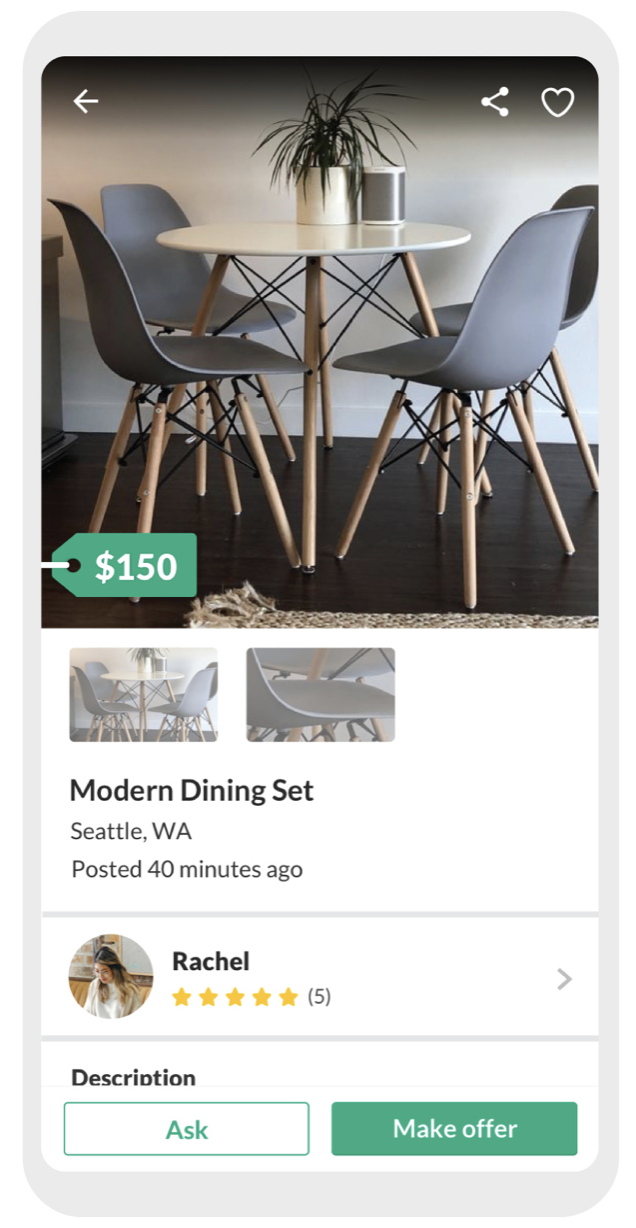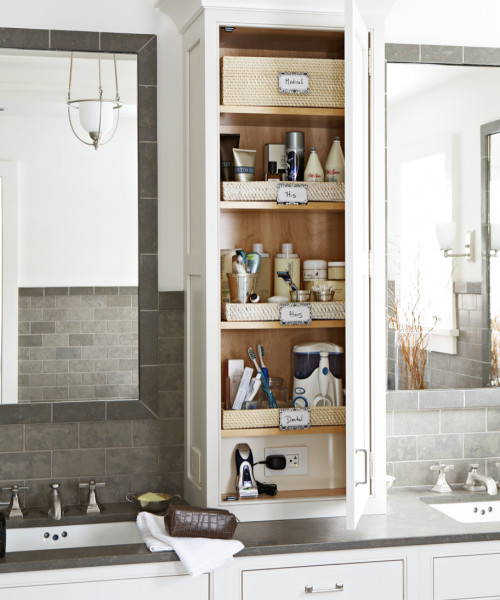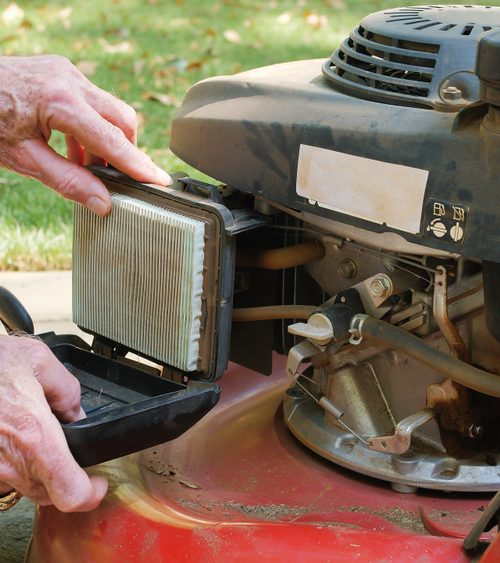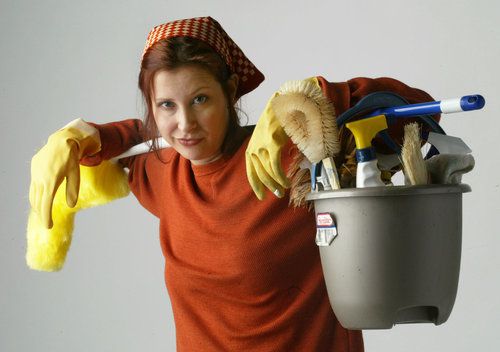By Jessica Bennett | BHG.Com
Troy Warren for CNT #HomeGarden
You could be sitting on thousands of dollars worth of resellable items. Follow these tips to clear out clutter, make some extra cash, and stay safe while you do it.
If you’ve been storing furniture and home decor you no longer use or want, now is a great time to start clearing out that extra stuff. Before you set that old sofa or antique dresser on the curb, however, consider the potential resale value of the piece. “You’d be surprised at what you might be able to sell,” says Natalie Angelillo, vice president of community at OfferUp, an online marketplace. “Even items that are slightly damaged or have normal wear and tear can still be sold to the right person.”
Selling unwanted furniture and decor online is an easy way to make some extra cash (and free up space around the house). In fact, according to a new report from the online resale marketplace Mercari, the average household contains more than $4,500 worth of unused goods that could be resold. Follow these tips on how to sell furniture and decor online, including the extra precautions you should take to stay safe when selling to strangers.
1. Choose the Right Platform
Listing items on the right platform is key to successfully selling your stuff online. There are tons of options available with a wide variety of features, and the best one for you will depend on your preferred style of retail and the types of items you have to sell. Here are some of the best places to sell furniture and decor online:
- Chairish: Best for high-quality vintage pieces or on-trend items, such as a velvet upholstered sofa or cane-back dining chairs
- Craigslist: Great for quick sales at bargain prices
- eBay: One of the most-visited resale sites with a bidding option that lets you pick the best offer
- Etsy: Popular destination for selling homemade goods as well as secondhand decor including artwork, rugs, and furniture
- Facebook Marketplace: Ideal for local listings and easily accessible through your Facebook account
- Mercari: Where you can sell nearly anything you can ship, or have your stuff picked up by a driver and delivered locally
- OfferUp: Lets you quickly post listings for local delivery or pickup and nationwide shipping straight from your phone
- Poshmark: Best known as a clothing resale site, but also good for small homewares and decor
If you’re new to the resale game, start by listing one item on a single platform to test how well it works for you. Continue with the rest of your items if the process goes smoothly. Otherwise, consider switching to a different site.
Related: The Best Places to Score Vintage Furniture and Decor Online for Less
2. Clean or Repair the Item As Needed
Before listing something online, complete any necessary cleaning or touch-ups. Clear off any dust or cobwebs, and treat stains on rugs and upholstered items. Consider completing minor repairs, such as re-attaching a broken sofa leg or getting an old lamp re-wired, to make the item more functional and attractive to potential buyers. A fresh coat of paint or a new wood finish can also help make the item look like new.
3. Take Quality Photos
“Within online selling platforms, buyers tend to be very visual and will only stop to read the description for an item that catches their eye,” says Amy Mings, a frequent Facebook Marketplace user and blogger at Maison de Mings. To ensure buyers know exactly what they’re getting, your listing should include several accurate, high-quality photos of the item from different angles, including a full view of the front and sides and close-up shots of details or damaged areas. Take photos in natural light (with no added filters) against a neutral background that’s free of clutter for a more professional look.
4. Write a Detailed Description
The item’s description should answer any questions the buyer might have and include keywords, such as “gray upholstered sofa” or “small wood dining table,” to help your listing appear in searches on the site. Include as many details as possible, such as the age of the object, brand name, color, style, dimensions, or even an interesting story about how you got it. “If your item is similar in style to a popular name brand, like Pottery Barn or West Elm, you should mention that as well,” Angelillo suggests.
Additionally, be honest about the piece’s condition and make note of any dents, scratches, or damaged areas. It’s best if the buyer knows ahead of time about any damage; otherwise, they might insist on returning the item, which creates an even bigger hassle for you.
“You will also want to consider listing delivery and/or pickup arrangements within the description,” Mings says. “Sellers that are willing to meet or deliver the item generally have quicker sales than those that offer pickup only.” And perhaps most importantly, the sentences should contain proper spelling, grammar, and punctuation so the description reads clearly.

5. Price the Item with a Goal in Mind
Before you decide on a price, do your research to determine the value of the piece and what buyers might be willing to pay for it. Consider what you originally paid for the item, but remember that most shoppers won’t be willing to pay full retail price for a secondhand piece. According to the Mercari report, secondhand shoppers on average expect a discount of at least 25% off retail prices, even if the item is new with the tags still on. When deciding on a fair price, consider the item’s age, level of wear, and brand. “A good rule of thumb for gently used items is to price at 40% off the original retail price,” Mings says.
If your primary goal is to make some extra cash, search for listings of similar items to determine what other sellers are asking. In anticipation of haggling, consider setting the price slightly higher than the lowest you’re willing to go. However, if you’re looking to get rid of an item fast, Angelillo suggests listing the piece at a lower price than similar listings so that it sells more quickly.
6. Practice Safe Delivery or Pickup
Selling furniture and decor online requires proper safety precautions to protect you and your information. First, communicate with the buyer only through your chosen resale platform so you can easily report issues if they arise. Don’t give out personal information including your phone number, email address, passwords, or banking information.
For extra precaution, plan to meet the person in a well-lit public place, instead of inviting them to your home. When meeting in another location isn’t feasible or convenient, only give out your address if the person is committed to purchasing the item. If possible, move the item to your garage or driveway to avoid having the buyer enter your home. Have a buddy with you or inform someone else of your plans. Discuss the details of the sale, including the price and type of payment, with the buyer ahead of time. Ask for payment in cash or through a secure payment service such as PayPal or Facebook Pay.
In light of the coronavirus pandemic, contact-free approaches are a good idea where possible. “If you are selling items to someone located in your area, you can also consider having the buyer pick it up at your doorstep (we call it a ‘porch pickup’), or you can drop it off on theirs to limit personal interaction,” Angelillo says. If the item is small or not easily breakable, shipping might be your safest option. Regardless of your preferred delivery method, it’s best to clean and disinfect the item as well as you can before sending it off so it’s in the nicest condition possible.
With these best practices, selling your stuff online can be simple. Now all you have to do is clear out that clutter!
In Other NEWS



































